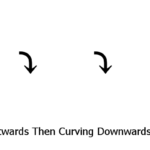| Copy to clipboard: | |
| Symbol: | ⬅ |
| HTML Code: | ⬅ |
| Unicode Character: | U+2B05 |
| Name: | Leftwards Black Arrow |
| Description: |
The Fascinating Meaning Behind Leftwards Black Arrow Emoji ⬅
The “⬅ Emoji Leftwards Black Arrow” is a common emoji used to indicate a movement or direction from left-to-right. It is often used to show the completion of a task or suggest a ‘back' button, giving the hint to ‘go back'. This emoji can be used to express a multitude of meanings, such as ‘returning to a previous page' or ‘rewind the topic of conversation'. It can also be used to indicate a need to go back and re-evaluate a situation or decision.
Download Your Leftwards Black Arrow Emoji PNG 🖼️ in Two Different Formats!
Download the Leftwards Black Arrow emoji in both transparent background and white background versions for use in your projects.
Leftwards Black Arrow Emoji Examples in Sentences 📝
1.⬅️ Use the ⬅ emoji to show the direction “leftwards” in a sentence.
2.Make sure to add a ⬅ sign when indicating a direction in a sentence.
3.Let's use the ⬅ emoji to remind us to “go left” in this sentence.
4.Sometimes, it's a good idea to take a step back and use the ⬅ emoji to indicate that you need to go back and reconsider a decision.
Unveiling the Journey and 🌍 Cultural Significance of the Leftwards Black Arrow Emoji
The ⬅ emoji, on the left side of the screen, symbolizes a leftward black arrow. This emoji first gained prominence as part of the DoCoMo emoji collection in 1998, when it was released alongside 176 new emoji. It has long been a popular choice in Japan for representing directionality, though its use quickly spread and today the ⬅ arrow and its companion emojis are commonplace in texting and online communication around the world. The ⬅ also has a cultural significance in Japan, as an expression of Naruto's “Return of Nine Tails” jutsu, used to gain power and control over a kyubi. It is often seen in this context as a sign of success or cross-cultural understanding. It has also been seen as a representation of ‘turning back the clock' or revisiting the past in order to make progress in the present.

















